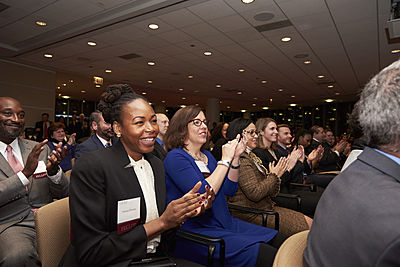Associate Professor Damon Jones, a Harris economist who explores issues at the intersection of public finance, household finance, and labor economics, recently returned to Harris from a year at the White House Council of Economic Advisers. We sat down with Professor Jones to learn more about his research, the state of the economy, and his time at the White House.
You started working at the White House Council of Economic Advisers in early 2021, when the COVID-19 pandemic was still raging. What was it like working there at a time of such disruption?
Ironically, this made my transition to the position a little easier, as I worked from home for the first few months. Since I had already been spending the prior year at home anyway, I was able to begin the job in a familiar environment. It was nice to eventually go into the office. Even when in-person, however, many of my meetings were still held via Zoom from my work office. I am relatively cautious when it comes to COVID, so I appreciated the protocols in place in the office to mitigate COVID risk while I was there.
What’s the structure of the CEA, and what was your role?
The Council of Economic Advisers is a relatively small unit among other parts of the White House, led by a Chair and two Members. Next are the senior economists, of which I was one, and then additional staff economists and researchers. The environment was very collaborative, and I think some of that flowed from the leadership of the Chair, Cecilia Elena Rouse. As a senior economist, I assist the Chair and Members in giving input into various policy processes, work to put together reports on different aspects of the economy, and contribute to a major annual report, the Economic Report of the President, which comes out once a year, a few weeks after a budget is released.
Click here to read the full interview.
This story was first published by the Harris School of Public Policy.



